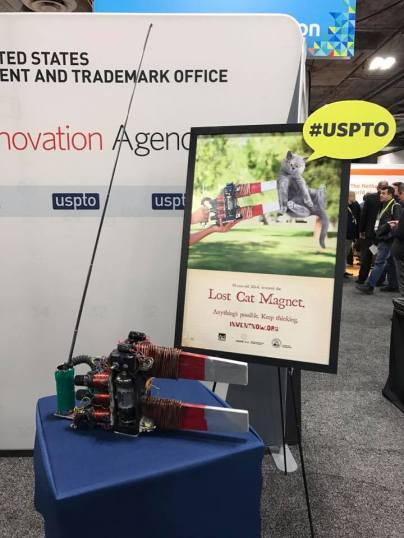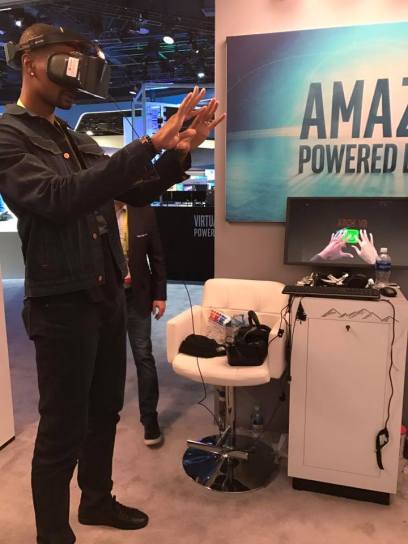The biggest trade show Consumer Electronics Show (CES), which was held from Jan 5th – 8th 2017 in Las Vegas, has become a familiar event for many of the country’s top companies to scout the latest trends, from a connected magnet that can find a lost cat (it’s a joke!) to Intel’s mixed reality Project Alloy that can allow the users to see the world around them while remaining in the virtual space.


The future of commerce lies in a digitally connected world. Artificial intelligence (AI) as a concept has existed over three decades, but it is only now that data, processing, and storage have become abundant that there has been a resurgence in interest. AI is software that is capable of doing cognitive functions that we associate with human minds, such as learning and problem solving at a speed where human minds simply cannot match.
AI in Grocery
Grocery industry is a $680B market, and like all giants at the pinnacle of their power, it is not clear the grocery stores are sufficiently paranoid about what might come next. As demonstrated in the recent launch of Amazon Go concept store which uses AI technologies like computer vision, voice-recognition, IoT sensor, etc to eliminate the need for cashiers and checkout lines, the surprising fact is that the technologies powering the experiences for this revolutionary change are all typical in any automated situations.
Machines may not be able to understand as well as humans yet, but they certainly illustrate how automation can and will eliminate certain repetitive and manual labor work. The conspicuous absence of comparable functionalities such as ordering online, same-day delivery, customer data analysis makes it hard to believe that majority of grocery stores are not falling behind Amazon Grocery. At the time where traditional in-store grocery sales is declining as more shoppers are moving online, there are two immediate areas of focus any grocery store should use AI for.
AI Focus 1: Turning Customer Data into Personalization, into Revenue
AI’s ability to sift through, remember, and learn from vast amount of information can get the brick-and-mortar grocery stores closer to dealing with the complexity of factors that can impact a consumer shopping behavior, from determining exactly why customers purchase at what time interval to geographical preference for products. Not only will this hugely benefit the grocery stores by encouraging more sales from those shoppers and helping them focus on high-margin products, but it could also be especially valuable for customers who choose to leverage voice-assisted devices to make daily purchases.

Amazon’s voice-based assistant Alexa and its embodiment, the connected speaker Echo, may one day be able bring life voice as the new user interface, as in the ability to create a recipe, order the ingredients from its Amazon Go store, and send request to deliver an order to a customer’s home in two hours, all based on shouted instructions by the user to the wireless speaker. Imagine this: the consumer simply needs to say, “I am going to make an Italian dinner for two. Each meal should not be more than 500 calories. All ingredients need to be organic and gluten-free. I need the groceries by 6:30pm today.”
AI Focus 2: Cutting Costs by Automation
One of the most promising applications for AI is to make a welcome impact in customer experiences. Traditional tasks such as finding logistics companies and managing customer services through call centers and emails are expensive. AI not only represents a blank slate for improving and innovating customer shopping experiences, with the right vision, companies can use it to thrust stores on an accelerated maturity path to increase efficiency and thus reduce costs.
Advanced software companies such as Pathover has successfully transformed the last mile delivery by enabling last-mile delivery to become more affordable. But last-mile process consists of more than just the actual delivery. Pathover includes other optimization methods to reduce grocery’s operating costs even further.
Chatbot / Virtual Concierge
Chatbots are virtual, intelligent conversation agents applied to variety of customer engagement scenarios. In short, chatbots are sophisticated computer programs designed to simulate conversation with humans online.
With the AI chatbot from Pathover, consumers could talk to a virtual agent from the stores they order the goods from via traditional SMS texts to inquire about the order status or to re-schedule package delivery without involving a staff member from the grocery store.
Mining Data
Pathover’s core competency lies in its self-learning systems to mine data (customer, sales, product, and travel data), comb through millions of combinations to find the cheapest delivery options and recognize patterns. With advanced machine learning, Pathover technology enables grocery stores to execute on actionable insights based on sales performance at any given time so the online store (and/or physical store) can evolve as fast as consumer preferences.
Stores that use Pathover software can see the last-mile delivery cost to be on average of $0.28 per mile, compared to $1.7 per mile directly from Postmates or $1.95 per mile from Uber without using Pathover. In addition to significant cost savings, stores using Pathover software enjoy at least two times the basket size as the order minimum.
And this is what happens when AI and machine learning come to the grocery store.
AI is not just a curiosity reserved for the large engineering powerhouses like Apple or Google; it is the technology most likely to disrupt the low-margin grocery industry as the need for manual work and human operations will rapidly become obsolete. AI technologies should not be treated as a cost center. It is an investment in the future. With imagination, AI can catapult any store to the frontier of innovation.
—-
Pathover helps automate all the manual processes to save time and cost so that any supermarket in the nation can offer its own online grocery shopping and free delivery to its consumers from its own website. Stores maintain their strong store brand while being able to use similar technologies as what Amazon or Walmart have built.
Join the movement at pathover.com or contact us at partnerships@pathover.com
One thought on “How Artificial Intelligence Can Save Grocery Stores”